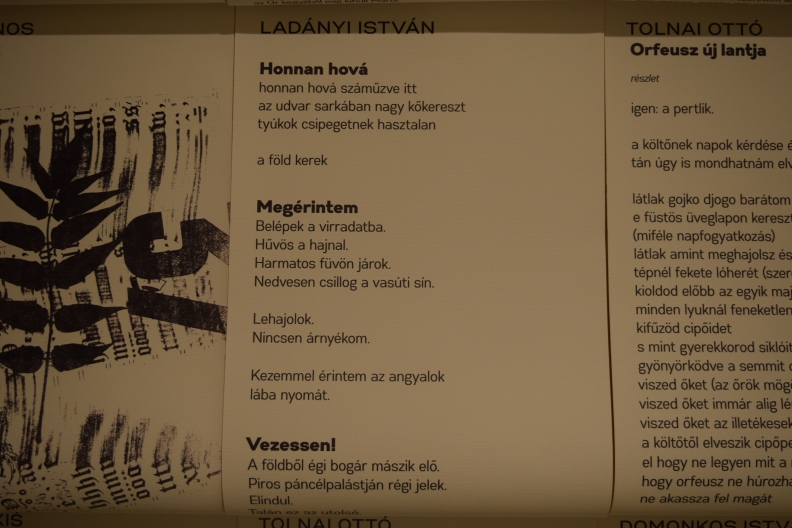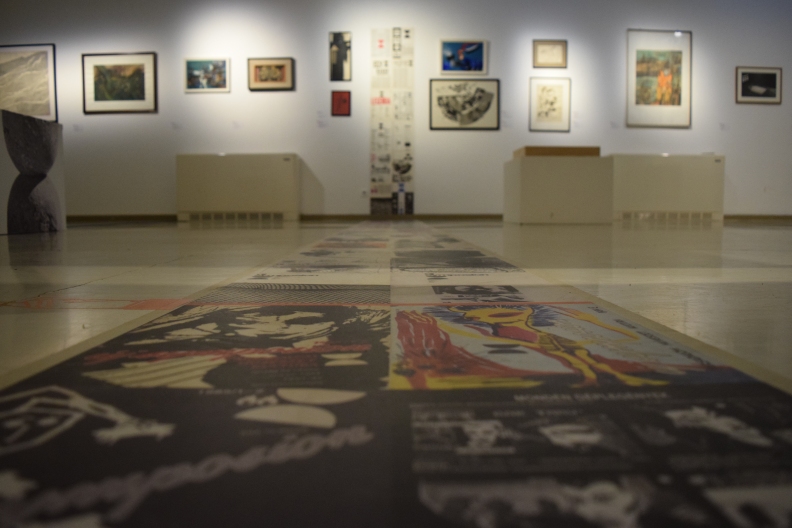When I came to Budapest, I knew that I wanted to make at least one excursion outside the city. I’d already taken the train to the Roman ruins of Acquincum, but that wasn’t enough. I needed to see the countryside. I wanted a taste of the hinterlands, where life was slow and you could smell fresh horse manure wafting from the pastures.

Szentendre was the perfect choice for a day’s trip out of Budapest. It’s a little Baroque village north of the capital, on what’s known as the Danube Bend- where the river meanders a little north and then sharply south, cushioned on either side by rolling hills. The name is derived from its association with Saint Andrew (Sankt Andrae in Medieval Latin and Szent Endre in Magyar).

Already confident with using the HEV, I hopped aboard at Margit Hid with an instant black coffee in one hand and my cell phone opened to Tinder in the other. As I sat caffeinating myself and messaging a local girl named Marsci about hanging out and learning some Hungarian, the train rattled through Óbuda; we passed the site of Acquincum and I was now further than I had been before. I looked out the window at these big tenement blocks, no doubt constructed during the Soviet era. The facades had been painted over with bright colors, and it seemed to me to be some kind of reclamation. Those big Soviet buildings always seem so bleak, but nonetheless fascinating, and seeing them infused with some brightness made me happy.

The apartment buildings gave way to trees, I looked down to read Marsci’s latest message, and before I knew it I was out in the gorgeous countryside I had for so long dreamt of seeing. Even inside the metro things were changing. There were fewer passengers, and those that remained seemed less stressed. A couple of middle-aged men got on, both of them carrying fishing poles, and I felt that I was crossing a barrier into the real Hungary. Even the weather had changed. It had been a little overcast in Budapest, but out here the clouds parted and the green valleys and fields were bathed in glorious sunshine.

When I got off the HEV, I was a little disorientated as to where I was in relation to both the river and the rest of the town. This part of Szentendre didn’t look very touristy or Baroque. Everything was modern and functional. I decided to pick a direction and start walking. I had a vague sense of what was north, and crossed a busy road and went down a narrow footpath through the trees. When I emerged, I found the Szentendre you see in the postcards. Old, slightly run-down buildings and stone walls. A big church whose bell was ringing. Cobblestone streets. You could hear the running water of a brook and you could hear the birds. I realized, being out in the country like this, just how much sound is muffled and diluted by the city. There were plenty of people here enjoying the atmosphere, including large groups of schoolchildren. This seemed to be a big thing in Hungary. Everywhere I went- from Acquincum to Margitsziget to the House of Terror- there were school field trips.

I wandered up Kossuth Lajos utca and hopped into the first museum I saw- the Ferenczy Museum. From the outside it looked to be an old building in keeping with the Renaissance vibe of the town- but on the inside it was super modern. As I stepped into the lobby, I wondered if this really was a museum. Perhaps the museum was in another wing of the building, I thought, and it shared floor space with a brokerage firm. There was no one else there, I had seen no one entering or leaving, and I approached a desk off to the side. The friendly woman there told me I was in fact in the right place, and gave me a map of the town. She circled three museums I ought to see, all of which I could access with the ticket I bought here. Pretty sweet deal I thought.


The first exhibit I saw- and the one I fell in love with- was A csalók is álmodnak (Swinders Dream Too) by Éva Magyarósi. I was eager to find a contemporary Hungarian artist- someone young, someone actively working on their craft, and someone that produced something edgy and visceral. Éva Magyarósi ticked all those boxes, and the walls were full of TV screens that showed her animations. I put on the attached headphones and fell into the surreal, fantastic worlds she created. I can’t really compare her work with anything else, but there was something otherworldly about it that reminded me of the Franco-Czech animated film The Fantastic Planet (1973), as well as the work of Wayne Barlowe. The short films were an intriguing blend of poetry, pencil drawings, and animation, exploring themes of loneliness and femininity. The fact that it was Magyarósi’s voice reading the poems aloud really enhanced the feeling that I was being given direct access to her soul. My understanding of the Hungarian tongue can be charitably described as limited, but just by the tone of her voice I had a feel for the subject. I asked the curator if they had any of Éva Magyarósi’s books on sale but they didn’t. I’m still dying to get my hands on a copy of her work in book form.


I took some photos and left, following the map to Fő tér. I stopped at many souvenir shops along the way. I wanted something authentic and handcrafted to buy as a birthday present for my friend Elizabeth. I told the storekeeper of one such shop the situation, and enquired about some traditional Hungarian scarves. She asked for Elizabeth’s hair and eye color. Brown and brown. She recommended red or green. I chose red, because Elizabeth is UW-Madison Badger. I asked if the material was Hungarian and the storekeeper said yes, then demonstrated for me the various ways Elizabeth could wear it. The scarf was adorned with flowers, and I had a good feeling my friend would like it. She likes scarves and she lives in Ireland, so I figured she would get some good use out of it. As I made the payment, I ended up chatting with the two storekeepers about some of the things I had learned about Hungary thus far. I name-dropped Ferenc Puskas again, and the man smiled. I asked if in Magyar, he would be called Puskas Ferenc. They confirmed this was true, and said they were impressed I knew about surnames coming first when speaking in Hungarian.

I bade them farewell and decided to take one of the many narrow alleyways toward the river. So far, my day was off to a good start. I had tended to my artsy fartsy concerns- now I had to satisfy my belly…


This makes me want to visit Hungary!!!!
LikeLiked by 1 person
DO IT!!!
LikeLike